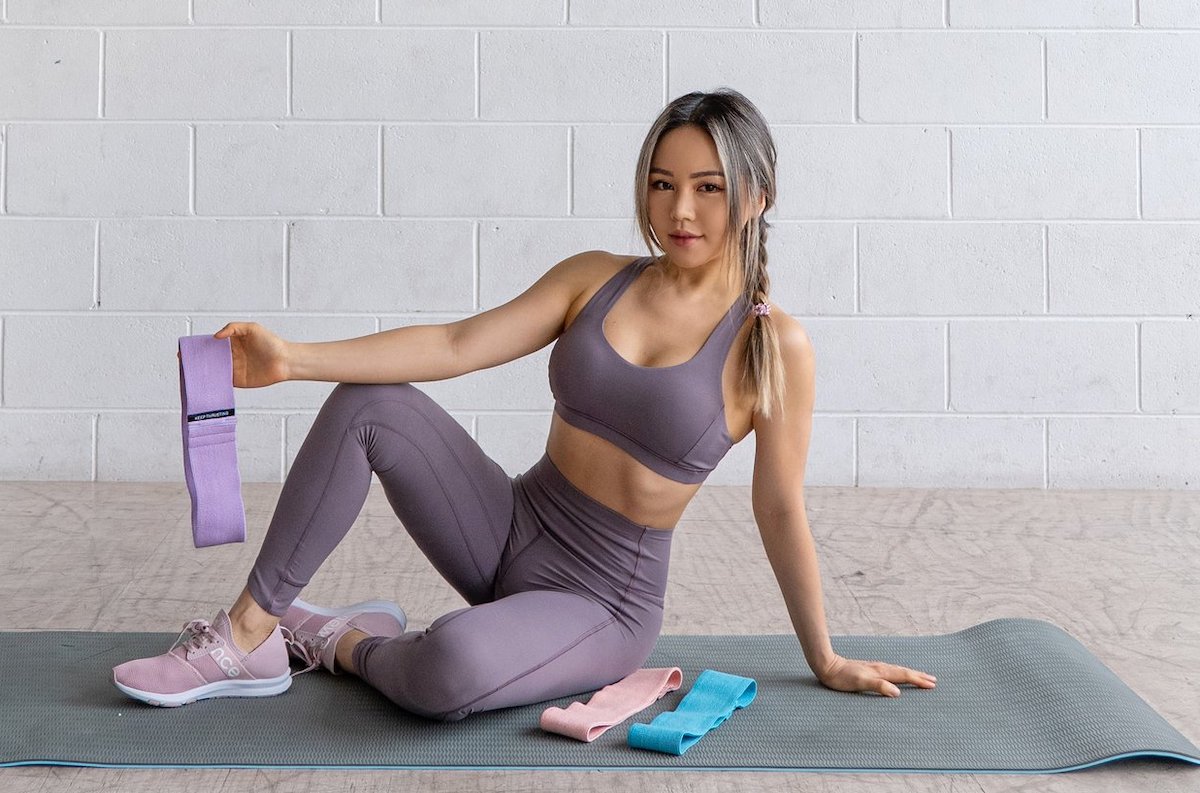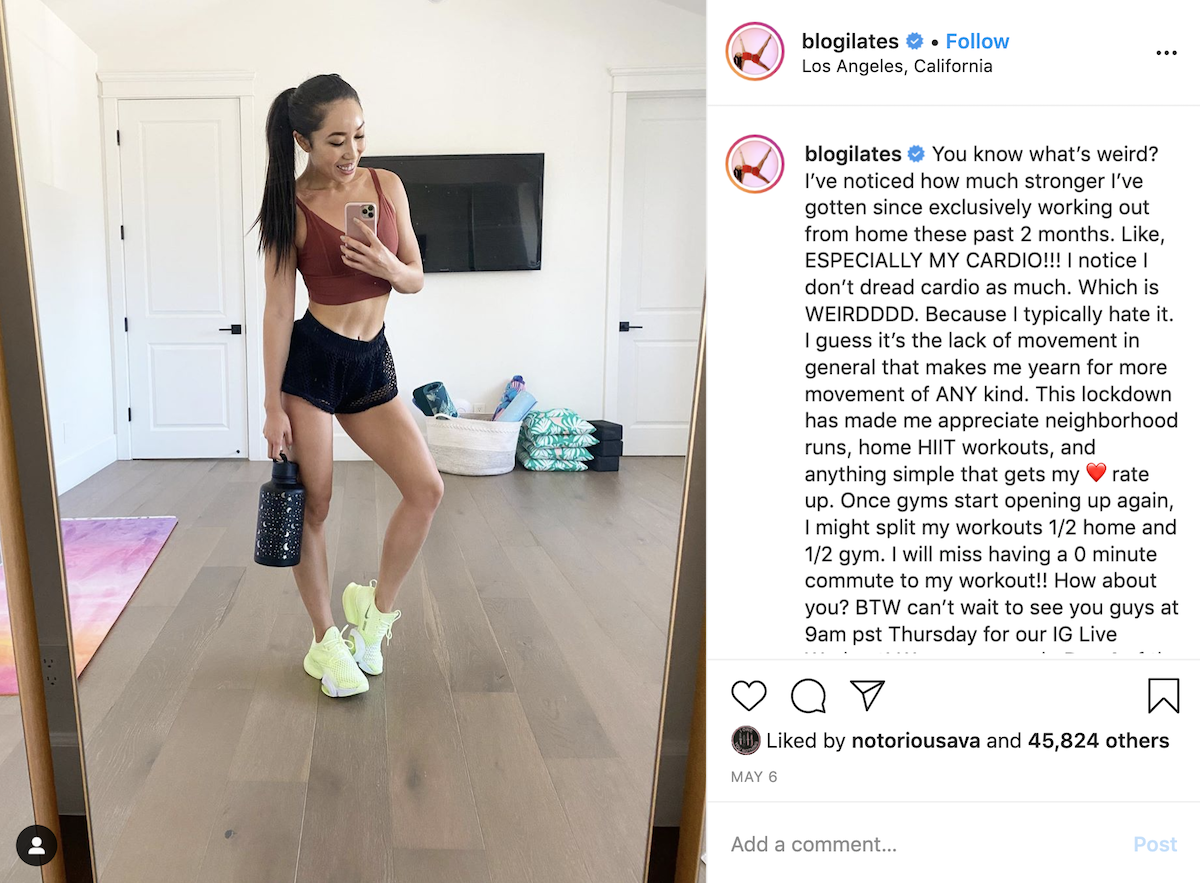
If there’s a fitness icon that will come to define 2020, it’s probably Chloe Ting. She’s at least the most memed. A 34-year-old Australian YouTuber (originally from Brunei), Ting now has over eight million subscribers, and has become the unofficial face of quarantine fitness, especially among the social media generation. She has become emblematic of the larger quarantine fitness trend, with influencers like Pamela Reif and Cassey Ho of Blogilates also seeing major subscriber bumps since the pandemic kicked in in the US. Together, they’re shaping what working out looks like right now, but though they make up a new wave, their brands fall into tired tropes of the wellness industry.
Their videos are simple, repetitive, apartment-friendly exercises, and have caught the attention of the internet. Chloe Ting’s two-week ab challenge video gaining over 123 million views in the last few months, and the Blogilates channel has gained over a million new subscribers since March. Short fitness programs like these are these accounts main draws, with countless fans documenting their journeys across social media.

The exercises themselves are nothing new, featuring basic bodyweight-workout style movements like plank-jacks and lunges, but the simplicity of what they’re peddling is infinitely appealing. To follow along to a few YouTube videos a day without having to leave home seems like a doable task for most, and with titles like, “Get SNATCHED during Quarantine,” or “20 Minute Waist Whittler,” these influencers excite the imagination and promises a high payoff.
The claims in these video titles are classically misleading. Where there are workout videos, there is workout clickbait. Ting, in particular anticipates this criticism and works constantly to address it in her videos. She concedes that you can’t target fat loss, and acknowledges that not everyone who does her challenges is going to get as ripped as her in fourteen days. She agrees that the titles of her videos can emphasize fanfare over fact, and preaches body positivity across her accounts.

Beyond mere likeability, though, the form of these influencers’ content caters to the habits and desires of their young fans. Their audience can engage with videos, leave comments on what they’d like to see more or less of, and through hashtags, fans can feel included in a larger movement, finding thousands of workout buddies. The hashtag #ChloeTingChallenge has over 215 million views on TikTok, and Pamela Reif regularly streams live workouts, so when you participate, you’re not suffering alone- there’s a virtual community who is going through the same thing. Plus, their videos are all totally free, offering an equitable alternative to trendy boutique classes like SoulCycle or Pure Barre that most young people can’t regularly afford.
Ting is also unique in her ability to play into the meme culture that has come to define Gen-Z. She has a series on her YouTube channel where she reacts to fan videos lovingly goofing on her workouts. She laughs at and finds joy in these videos, encouraging and participating in the culture that made her famous. She takes care to project that she’s in on the joke.
Though the visible majority of fans seem to be engaging with these influencers positively, claiming they boost their mood and help them love their bodies, it’s hard to shake the icky-ness of the premise, especially in our current historical moment. There seems to be two main channels of discourse about exercise right now: one that preaches acceptance of weight gain if it’s our natural coping mechanism (it is a pandemic after all,) and one that urges us to take advantage of the free time we might have to finally get in shape. While Ting and Ho themselves might seem to be adopting the former attitude, and always says the “right thing”, the proof is in the product.
This trend of videos often lean into trendy body insecurities, promoting the kind of Instagram model body type that’s currently in fashion. All of their thumbnails prominently feature their mega-toned figures, idealizing their almost identical bodies. Some video titles are also eerily specific, promising to “Grow Booty NOT Thighs,” or to “Get Rid of Hip Dips.” The workouts zoom in on minute body fixations, ultimately crafting a narrative that revolves not around health, but around an unattainable, photo-ready body type.
As much as these influencers tell us to love ourselves the way we are, their brands are still agents of the 4.5 trillion-dollar wellness economy: a market that survives off of creating problems for women and then peddling their solutions. Women are taught from birth that our bodies are our most valuable currency in this world, and that it’s our job to optimize it for consumption any way we can. Even in this fraught time, we are expected to keep fighting this insurmountable battle. Quarantine hasn’t changed the pressures of a “perfect” body, it’s just changed the methods, and fitness influencers has found the latest way to cash in.


